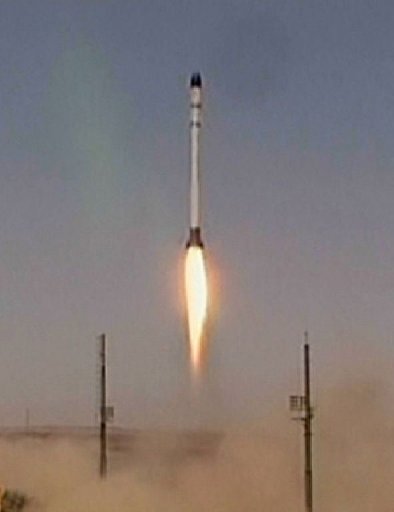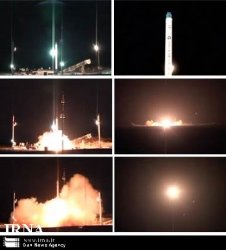On auspicious birth anniversary night of Imam Ali Ibn Abi-Taleb (P), pride-inspiring technicians of IRI Aerospace Org (IAO) successfully launched Iran’s Rasad satellite into earth space Wednesday evening.
 On auspicious birth anniversary night of Imam Ali Ibn Abi-Taleb (P), pride-inspiring technicians of IRI Aerospace Org (IAO) successfully launched Iran’s Rasad satellite into earth space Wednesday evening.
On auspicious birth anniversary night of Imam Ali Ibn Abi-Taleb (P), pride-inspiring technicians of IRI Aerospace Org (IAO) successfully launched Iran’s Rasad satellite into earth space Wednesday evening.
The competent IAO scientists and technicians who had the experience of launching Iran’s 1st national satellite, Omid, into the earth space last year, whose main mission was image taking, and all phases of its design, manufacturing, assembly, testing, and preparation for being launched into the space were both initiated and completed inside the country, Iran’s 2nd domestically produced satellite, Rasad, was launched successfully into the space on Wednesday evening, an IRNA reporter said.
Rasad satellite, which weighs 15.3 kilograms and designed to be launched into the 260 kilometer orbit of the earth, is scheduled to rotate around the earth 15 times in 24 hours.
Rasad satellite’s mission is establishing contact with earth stations, obtaining orders from those stations, image taking from the earth, and dispatching those images along with telemetry information back to the earth stations.
The topology and structure of the earth stations of Rasad satellite, too, are designed in a way to provide the possibility for maximum access to Rasad through them, obtaining information, and forwarding commands at ease for the operators in charge.
The major part of the subsystems of a large satellite are found in this micro satellite, among which we can refer to the subsystems for power management, the solar panels, the situation control devices, the optical loads, the GPS, the onboard input and command management system, the onboard receiver and transmitter, the ranging transmitter, and the temperature control system.
|
SAFIR Iranian Satellite |
Turning the science, the technology, the designing and testing of the satellites and tele-image taking and meteorological functions in the space into indigenous know-how are inclusive of power generation in the earth orbit, specifying and controlling the combination of active-inactive statuses, manufacturing the solar sensors and the gravity gradient booms, all of which have taken place for the first time in Iran and are among the significant achievements in the design and implementation phases of this important project, IRNA reported.
Expansion of the required workshops and laboratories’ infrastructures for manufacturing, assembling, and functional and space condition testing of the small-scale satellites, providing the software cradle and expansion of the manpower capacity for designing, manufacturing, and testing the satellite and turning it into an indigenous know-how, inclusive of the earth stations in charge of controlling, transmitting commands, and receiving images, are among the other achievements of this project.
According to the report, the carrier of Rasad satellite, Safir, too, is made in the Islamic Republic of Iran, which is capable of carrying a 16 kg micro-satellite up to the 260 kilometer orbit (above the troposphere, the stratosphere, and the mesosphere, and within the lower parts of the thermosphere) of the earth.
The length of this satellite launcher is 22 meters, its diameter is 1.25 meters and Safir (ambassador) alone weighs 26 tons.
The first engine’s operation and its detaching from the system, operation of the 2nd engine, exit from the tense atmosphere, achieving the satisfactory speed and finally detachment of the satellite from its launcher were the phases carried by Safir satellite launcher successfully.
According to the IRNA reporter, the successful launching of Rasad is another long stride towards fixing the presence of the Islamic Republic of Iran in the space, and the four earth stations of the satellite namely the Telemetry and Command, the Central Station, the Mobile Station, and the Navigation Station, as well as the navigation, directing and control, and information receiving operations from Rasad have all functioned well and their operations are successfully continuing now, and God willing, till the end of their pre-scheduled proud missions.

